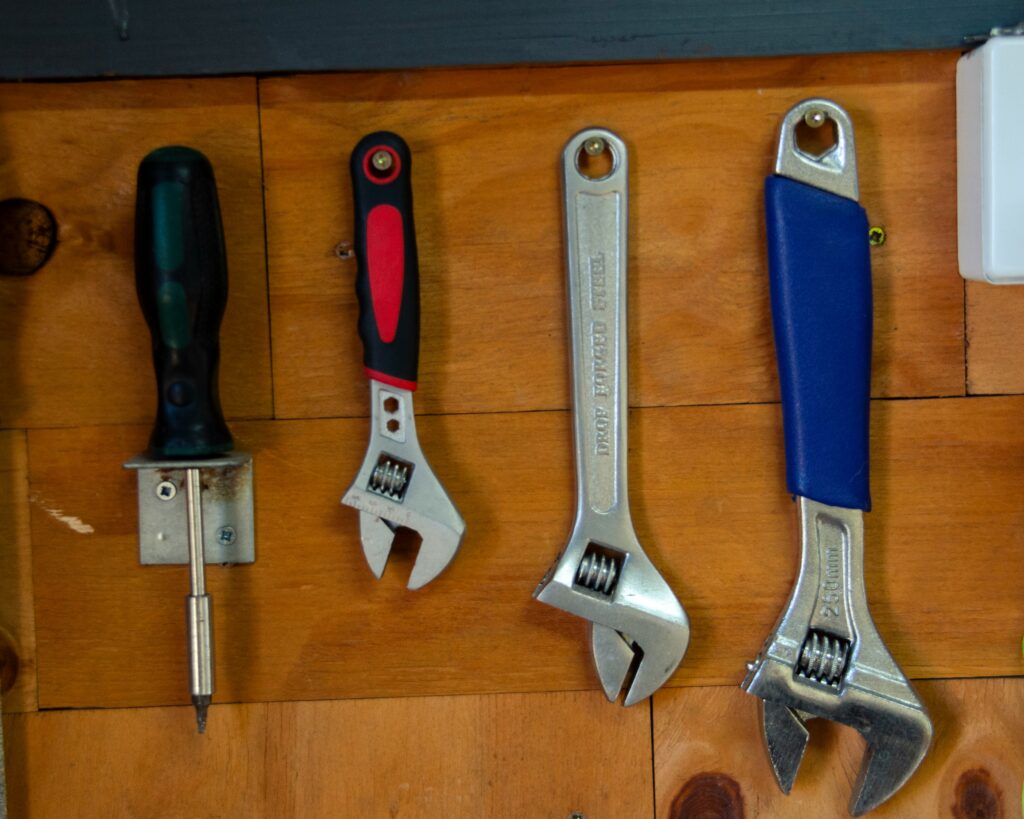Fixing structural and safety issues tops the list for a reason. These problems go beyond inconvenience — they threaten the integrity of the space and the people in it. Think roof leaks, exposed electrical wiring, or cracks in the foundation. They’re not aesthetic problems. They’re time bombs.
Too many people delay these fixes, betting they can stretch the lifespan of a weakened system. But that gamble gets expensive fast. Moisture from a small leak can lead to mold, rot, and major ceiling replacement. Faulty wiring can turn into a fire hazard. A shifting foundation doesn’t stop — it gets worse, and pricier to correct.
Ignore the big-ticket items, and you’ll eventually pay for them twice: once in cash, and again in stress. Prioritizing these repairs doesn’t just protect your space — it protects everything you do inside it.
Boost Energy Efficiency with Insulation and Smart Sealing
A comfortable and energy-efficient home starts with what you can’t always see: the insulation and sealing features behind your walls, windows, and doors. If your energy bills are rising or your home temperature fluctuates, it may be time to take a closer look.
Seal the Gaps: Weather Stripping and Caulking
Small leaks can lead to big energy losses. Fortunately, sealing gaps around doors and windows offers a quick improvement you can tackle in a weekend.
- Inspect doors for drafts or light coming through edges
- Apply weather stripping to door frames and window sashes
- Use caulk to seal exterior gaps where air might escape
- Pay special attention to older wood frames and baseboards
Upgrade Insulation for Long-Term Savings
Insulation plays a crucial role in stabilizing indoor temperatures. Whether it’s your attic, walls, or crawlspace, the right insulation can significantly lower heating and cooling demands.
- Focus on attics and basements, which tend to lose heat fastest
- Consider spray foam or blown-in insulation for hard-to-reach spots
- High R-values result in better thermal performance
Read more: Why Upgrading Insulation Should Be on Your To-Do List
Quick Wins to Lower Utility Bills
Even a few updates can result in noticeable monthly savings. If you’re not ready for a full-scale insulation overhaul, start small.
- Install thermal curtains or window film
- Use draft stoppers along the base of doors
- Schedule a home energy audit for a detailed assessment
Smart sealing and insulation aren’t just efficiency upgrades—they’re investments in comfort and cost savings.
Plumbing, HVAC, and electrical systems aren’t glamorous, but they are the backbone of any livable space. Ignore them, and problems stack up fast. When it comes to what matters most, think basics: clean water in, waste water out, temperature control, and functioning power. If one of these systems fails, the entire home feels it.
There are warning signs. Dripping pipes, low water pressure, or persistent clogs point to plumbing issues. For HVAC, it’s uneven heating or cooling, strange noises, or rising energy bills. Electrical problems show up as flickering lights, frequent breaker trips, or outlets that stop working. Don’t brush these signs off. They only get worse.
The smart play is staying ahead. Proactive maintenance—like flushing your water heater, cleaning air filters, and checking your circuit panel—catches small problems before they turn into big, expensive ones. In the long run, regular upkeep isn’t just about comfort. It saves money, too.
Mold, rot, and their quiet destruction
Water doesn’t knock when it comes in. It seeps, settles, and stays. And when it stays, it brings rot. Mold creeps into walls and floors before you catch it, eating away years of effort and dollars. It isn’t dramatic. It’s quiet, steady damage — the kind that isn’t noticed until it’s too late.
Good news is, most of it can be prevented. Start with the basics. Gutters should be clear, not sagging or spilling over. Downspouts need to carry water well away from the house. If the basement smells damp, it’s not your imagination — it’s a warning. Grading around the foundation might need fixing. Sump pumps should be tested, not trusted.
Materials make a difference. Pressure-treated wood, moisture-resistant drywall, composite trim, non-organic insulation — these hold up when things get damp. Old-school plywood has limits. Untreated lumber even more so. Smart builders are switching to materials that forgive, not fail.
The threats are slow, but the fixes don’t have to be. Fight moisture early and it won’t win.
When it comes to improving a space, it makes the most sense to start with the rooms you actually use every day—kitchens and bathrooms top that list. These aren’t just high-traffic zones. They’re also the areas where smart upgrades offer real returns, both in quality of life and resale value.
If something’s broken or outdated in these rooms, prioritize repairs that make life easier now and pay off later. Think functional plumbing, better lighting, or storage that eliminates daily headaches. Small changes like replacing a leaky faucet or improving cabinet access can go a long way without blowing your budget.
Not everything needs to be gutted at once. Know when to apply a temporary fix to buy time. A sleek peel-and-stick backsplash or a vanity refresh can hold the line while you save or wait for the right moment. But when foundational things stop working—ventilation, water pressure, wiring—it’s probably time to stop patching and go all-in. Timing matters. So does knowing what can wait and what can’t.
Outdoor Repairs: Siding, Walkways, Entryways
Curb appeal matters, but not all upgrades are created equal. When it comes to outdoor repairs, siding, walkways, and entryways are where first impressions get made—and where bad choices can sink a property’s value.
Start with siding. If it’s warped, cracked, or faded, no amount of landscaping will distract from it. Repair or replace with materials that hold up and don’t demand endless maintenance. Think fiber cement over old wood panels if you’re planning a longer-term hold.
Walkways and paths should be clean, safe, and intuitive. Cracked concrete and uneven pavers aren’t just eyesores—they’re also liabilities. Updating a walkway doesn’t have to mean a design flex. Focus on durable, weather-tested materials. A functional path that looks sharp is more valuable than a Pinterest-perfect mosaic that chips in six months.
Then there’s the entryway. This is the handshake of the house. A solid door, good lighting, and a clear, attractive approach matter. Flashy doesn’t always mean effective. A sleek, well-installed front door and quality hardware will outlast trends—and impress appraisers and buyers alike.
Bottom line? Do the repairs that protect the house first. Focus on things that last and perform. A fresh coat of paint won’t fix rotting wood. And a floating front step might look cool, but it won’t matter if the foundation is cracked.
How to Audit Your Home’s Repair Priorities
Start with a walk-through. Bring a notepad or use your phone’s camera—whichever keeps you focused. Look for issues in three main categories: safety, functionality, and aesthetics. If it could harm someone (loose railing, exposed wiring), that’s top of the list. If it’s making life harder (a leaky faucet, faulty HVAC), it’s next. Scratched paint and outdated light fixtures can wait.
Once you’ve got your list, rank by urgency and cost. Structural problems or anything water-related should move closer to the top, even if the fix is spendy. They tend to get worse fast. Quick cosmetic fixes? Save them for later or batch them to do in one go.
Budget plays a role, but it shouldn’t drive every decision. If you’ve got $2,000, blowing half on a bathroom vanity before fixing your sagging porch isn’t smart. Prioritize what prevents bigger bills later. Timelines matter too. Some repairs can wait until off-season rates drop. Others—like roof leaks—can’t wait for a sale.
As for DIY versus hiring pros, be honest. If you’ve never used a power tool and you’re watching how-to videos at 2 a.m., call someone. Things like repainting, patching drywall, or switching hardware are worth trying yourself. But when it comes to plumbing, electrical, or anything with load-bearing consequences, err on the side of hiring help. You won’t save money if you make it worse.


 Vicky Skinneriez brings sharp research and fresh perspectives to the platform. As a key contributor at drhextreriorly, she covers software advancements, modern app ecosystems, and the evolving digital landscape. Vicky’s writing blends accuracy with creativity, helping readers understand the real impact of today’s most important tech developments.
Vicky Skinneriez brings sharp research and fresh perspectives to the platform. As a key contributor at drhextreriorly, she covers software advancements, modern app ecosystems, and the evolving digital landscape. Vicky’s writing blends accuracy with creativity, helping readers understand the real impact of today’s most important tech developments.

